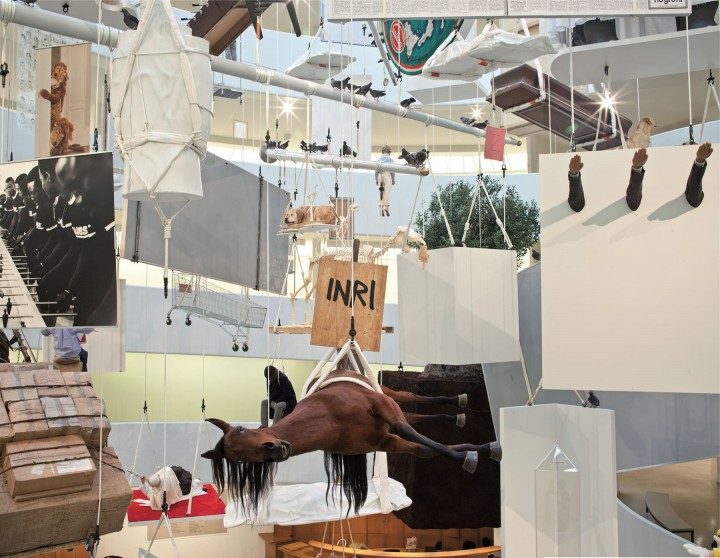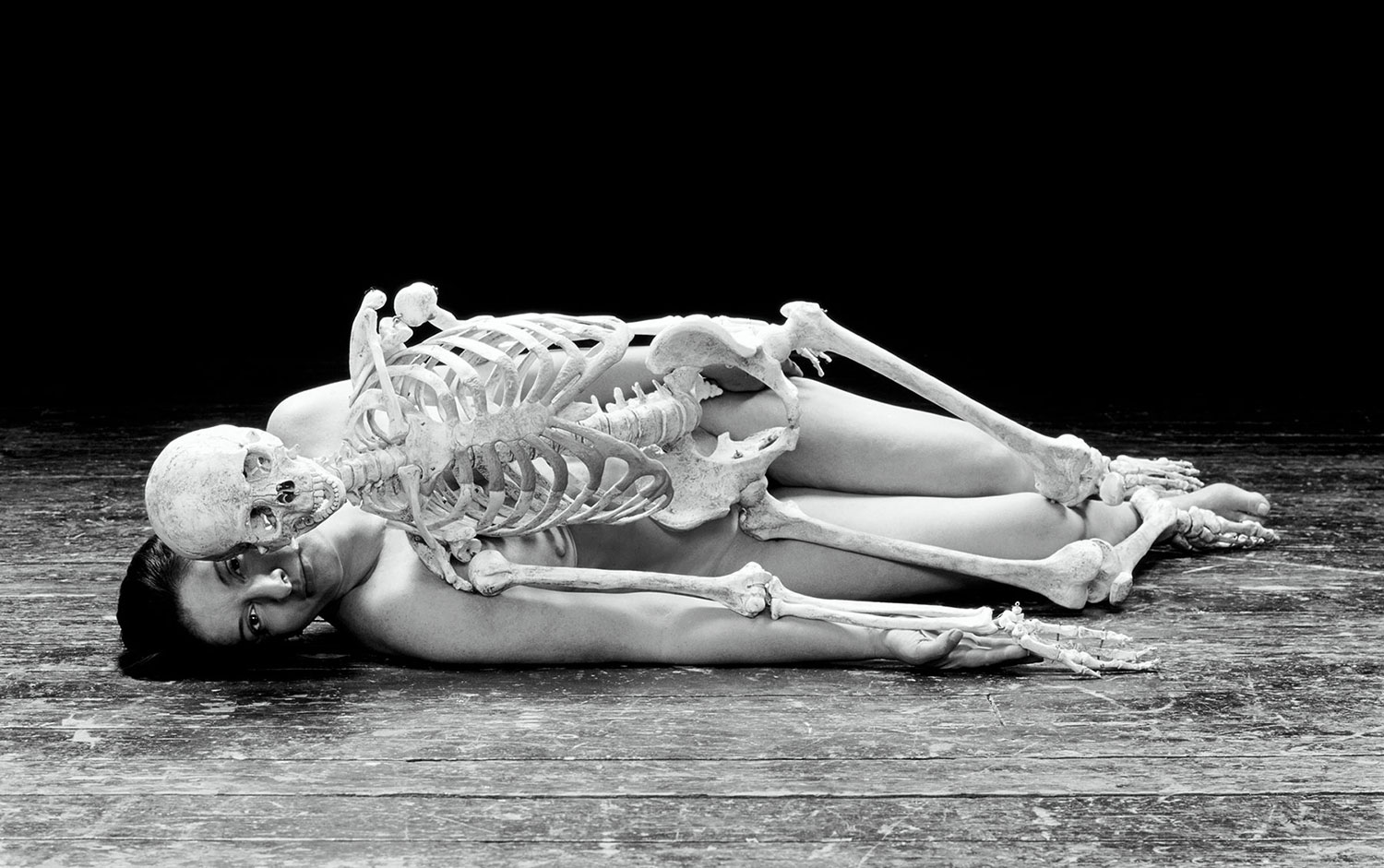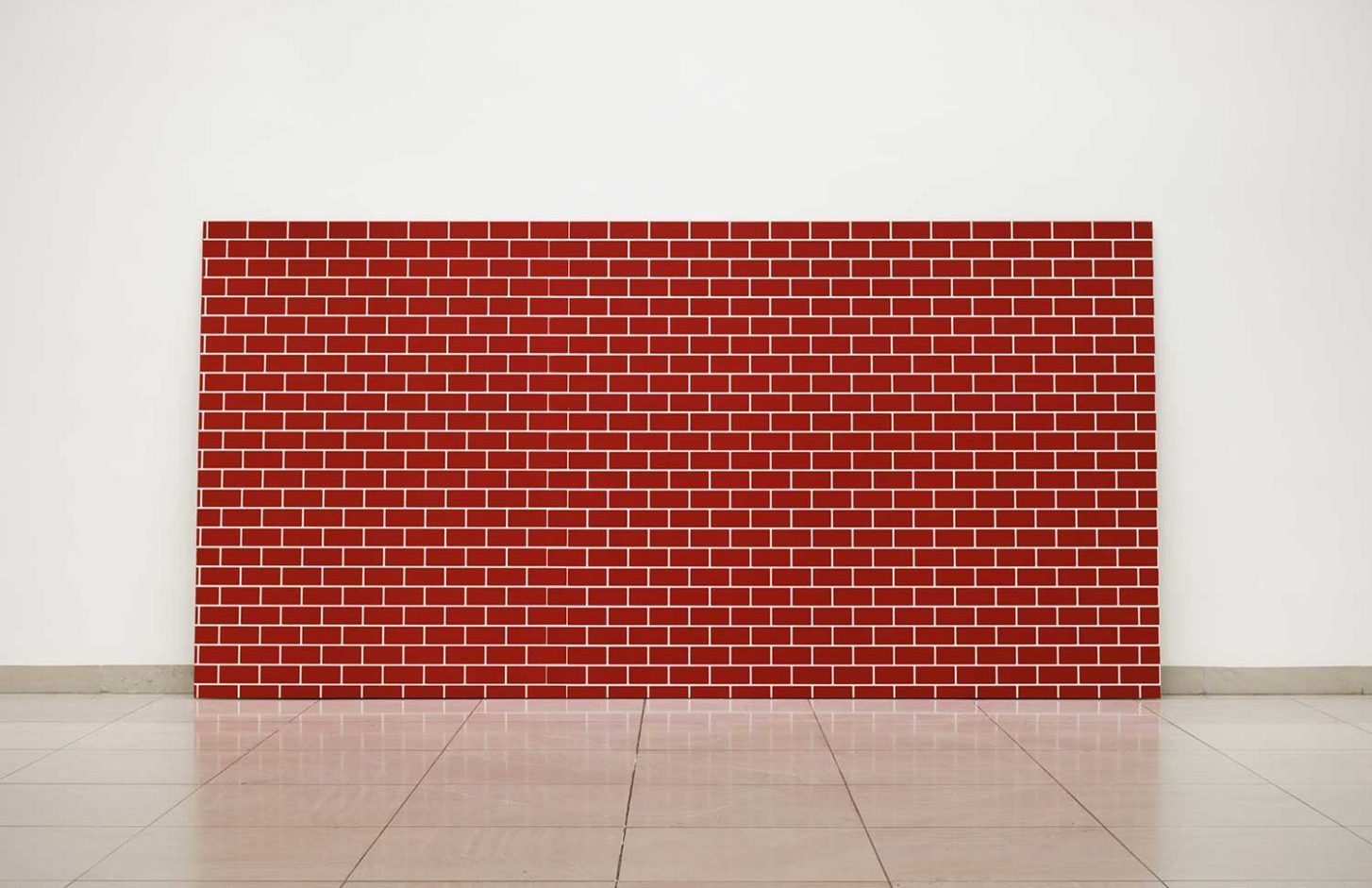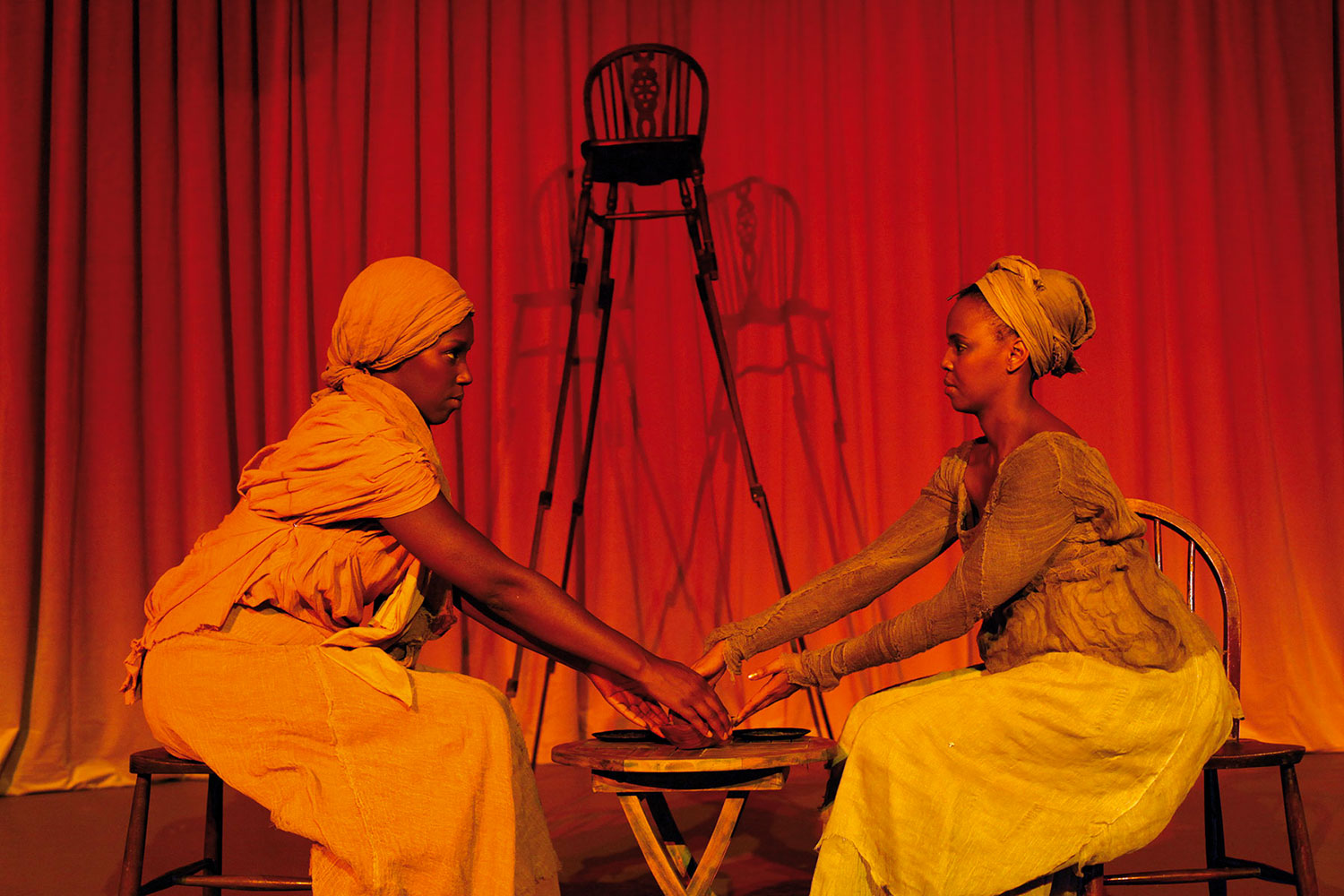
Today’s world is not only about ideas. And that may be why Maurizio Cattelan, whose work has always consisted of finding ways to understand the world he lives in, has had to end his life as an artist. His first retrospective is his final exhibition — how T.S. Eliot of him. The American poet once wrote: “In my beginning is my end.” Cattelan notoriously ran out of exhibition space for one of his first shows, and his work has always dealt with the issue of an exhibition as a non-offering, of not filling the space given. In a way, as long as he was still an artist, he could leave the space empty, or almost empty, aside from a small but fundamental gesture or object, whether it be Him or a sign indicating that there was no exhibition. But the moment he stops creating art, it becomes relevant to include everything and accept the proliferation of a true oeuvre.
Cattelan said that this would be a “democratic” show. And in a way it is: all his works have been lent to the Guggenheim for the exhibition, and all of them are hung from the roof of the building. The viewer as well is put in a very democratic position, insofar as he can create his own work, his own narrative from all these works. He can conceive his own idea based on all these ideas. But the artist’s penchant for democracy is always twisted and ambiguous: in many ways, the exhibition is much more than a mere egalitarian statement. First of all, seeing all these works together enables the viewer to see the continuities in Cattelan’s production: the playfulness, the redefinition of his own image, his passion for animals, the relation to art history; all of that is made visible in “All.” And for his last show Cattelan had an ingenious idea: to make the exhibition a work in its own right. In this way he finds the best answer to every issue raised by the so-called “relational aesthetics” generation (Should the artist be in charge of the display of his own works? What does it means? If the display is that important, isn’t the curator an artist? etc). As an artist, Cattelan creates a display feature that is an artwork itself. And rightly so: “All” as a display is incredibly elaborate and precise, with symmetrical patterns (the small-scale replica of La Nona Ora [The Ninth Hour] (1999) at the top, the actual work at the bottom) and resonances. This new work organizes the different elements of his entire oeuvre. Of course, the whole structure is a giant mobile that owes as much to children’s toys as it does to Calder. And probably this is Maurizio Cattelan’s key lesson: the creative force of contradiction; astonishment and precision; playfulness inside a very well-constructed work of art. As he once said: “Style is an index of early death.” From the moment he saw he had one, he decided on an artistic suicide. That also means a rebirth. In my end is my beginning.





